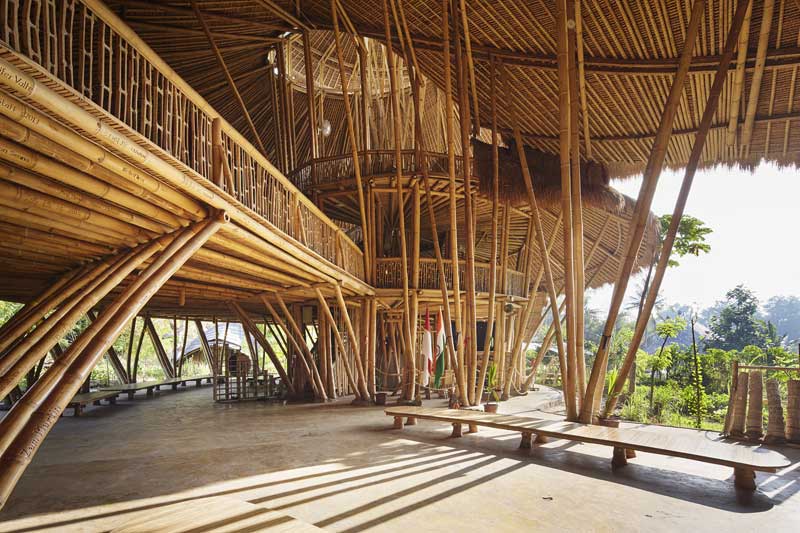In the realm of contemporary architecture, the quest for sustainability has become paramount. Architects and designers are increasingly turning to innovative materials to create structures that not only stand as marvels of engineering and design but also contribute positively to the environment. From bamboo to nanomaterials, the palette of options for building materials has expanded, offering exciting possibilities for green buildings and sustainable development. In this article, we delve into some of the most innovative materials reshaping the landscape of modern architecture.
Bamboo: A Versatile Eco-Friendly Marvel
Bamboo, with its remarkable strength, flexibility, and rapid growth, has emerged as a favourite among architects seeking sustainable alternatives. Its tensile strength rivals that of steel, while its rapid growth makes it an abundant and renewable resource. Bamboo’s versatility allows it to be used in various applications, from structural elements to finishes and furnishings. Moreover, its aesthetic appeal adds a touch of natural warmth to contemporary architectural designs, enhancing both form and function.

Ceramic and Porcelain: Timeless Elegance with Modern Sustainability
Ceramics and porcelain, traditionally associated with pottery and tiling, have found a new role in contemporary architecture as sustainable building materials. Advances in production techniques have made ceramic materials more durable, lightweight, and versatile. These materials offer excellent thermal properties, contributing to energy efficiency in buildings. Furthermore, their longevity and low maintenance requirements make them ideal choices for sustainable construction projects. With endless possibilities in design and application, ceramic and porcelain continue to inspire architects to push the boundaries of innovation.

Nanomaterials: The Future of Green Building
Nanotechnology has revolutionized various industries and architecture is no exception. Nanomaterials, engineered at the molecular or atomic scale, offer unprecedented properties that enhance sustainability in construction. From self-cleaning surfaces to energy-efficient coatings, nanomaterials provide solutions to some of the most pressing challenges in building design. Their ability to improve insulation, enhance structural strength, and purify air makes them invaluable assets in the quest for green buildings. As research in nanotechnology progresses, we can expect even more groundbreaking applications that redefine the possibilities of sustainable architecture.
Polymer Materials: Strength in Sustainability
Polymer materials, derived from organic compounds, offer a lightweight and durable alternative to traditional building materials. From bioplastics to recycled polymers, architects are exploring innovative ways to integrate these materials into their designs. Polymer composites, reinforced with natural fibres or recycled content, offer strength and versatility while minimizing environmental impact. Additionally, advancements in polymer recycling technologies are paving the way for a circular economy in construction, where materials are reused and repurposed to reduce waste and carbon footprint.

Natural and Recycled Materials: Harnessing the Power of Nature
Nature provides a wealth of materials that can be sustainably harvested and utilized in construction. From timber to earth, architects are rediscovering the beauty and resilience of natural materials. Sustainable forestry practices ensure the responsible use of timber, while earth-based construction techniques, such as rammed earth and adobe, minimize the environmental footprint of buildings. Moreover, the use of recycled materials, such as reclaimed wood and salvaged metal, adds character and authenticity to architectural designs while reducing demand for nascent resources. By harnessing the power of nature and the need to recycle materials, architects can create buildings that blend seamlessly with their surroundings while promoting sustainable development.

Leadership in Energy and Environmental Design (LEED)
The Leadership in Energy and Environmental Design (LEED) certification has become a hallmark of sustainable building design. Developed by the U.S. Green Building Council, LEED sets rigorous standards for energy efficiency, water conservation, indoor air quality, and materials selection in construction projects. Architects and designers strive to achieve LEED certification by incorporating innovative materials and strategies that minimize environmental impact and maximize performance. By adhering to LEED principles, architects not only create buildings that are healthier and more efficient but also demonstrate their commitment to sustainable development.
Image Courtesy – Bob Vila






